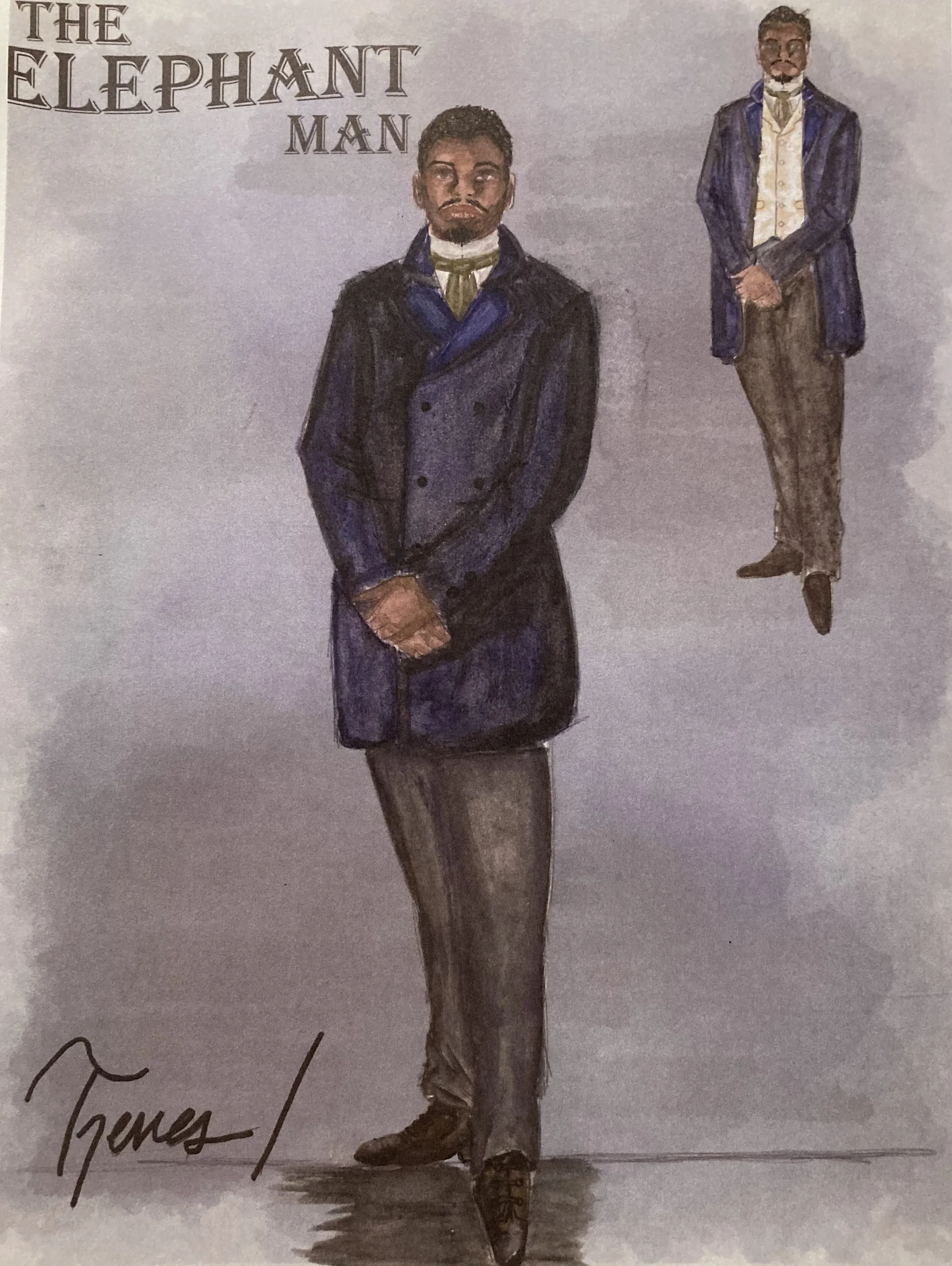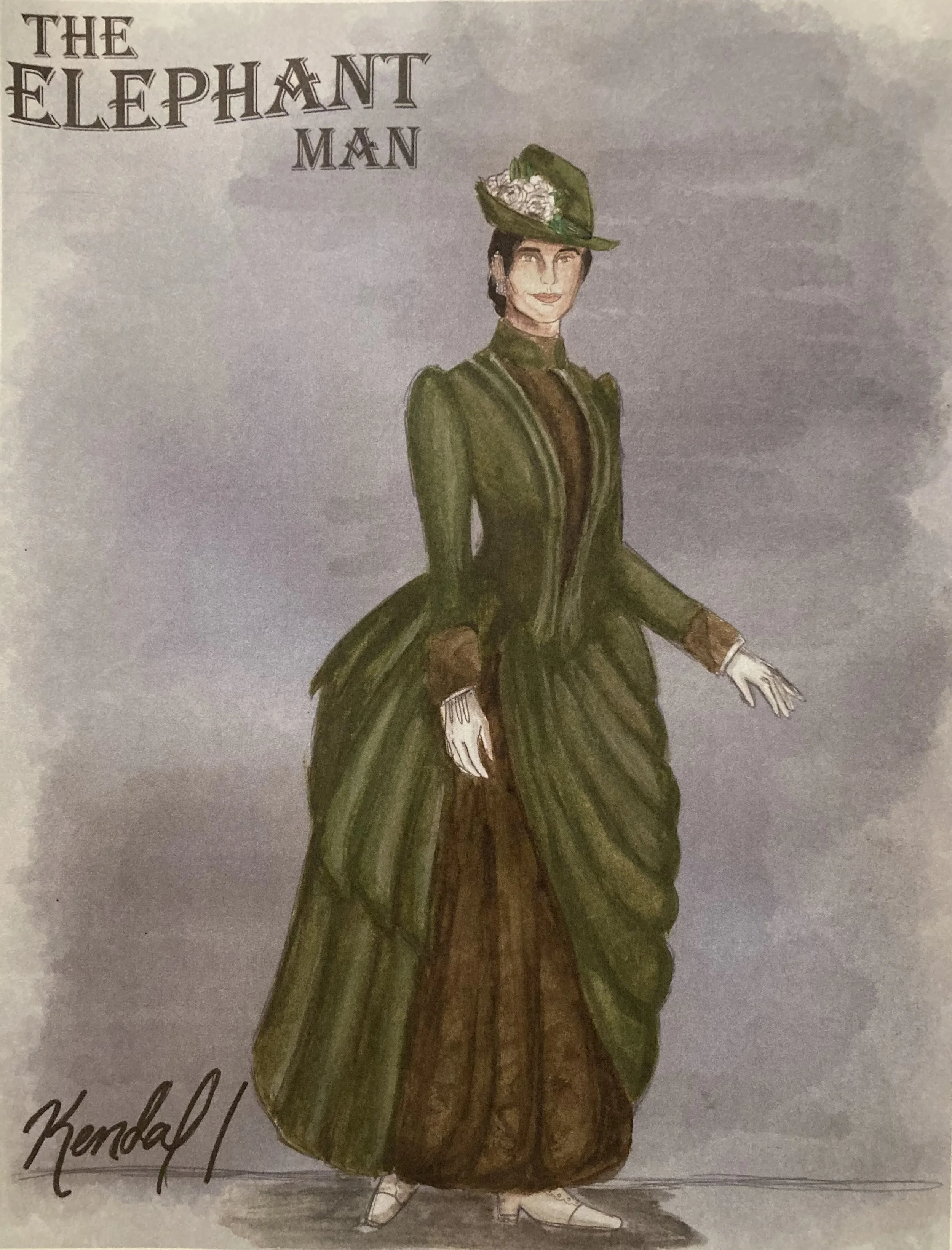The Elephant Man
By Bernard Pomerance
2nd Place Recipient of Southeastern Theatre Conference Undergraduate Costume Design Competition
For this hypothetical production of Bernard Pomerance’s The Elephant Man, I wanted to stay away from previous concepts in which Merrick is played by an abled actor, and create a space where a play that is so often caricature turn into something genuine by casting disabled actors in disabled roles.
The Elephant Man is, at its core, a show about humanity and its many shapes. This is a show about both the beauty and the ugliness of man, of our activism both genuine and performative. There are two sides to the world Pomerance has written, and both are deeply rooted within our modern reality. Merrick is almost always onstage, but at the back of the mind is a world offstage he will never be able to inhabit. No matter what he wears or how wonderfully tailored his clothes are, he will never quite attain the high Victorian fashion elements of the other characters onstage, instead always retaining his roots in the Whitechapel workhouses. In contrast, the other members of the London echelon are covered and conservative, with hats, gloves, and stiff collars, wearing their clothing as armor. The only exceptions are the Pinheads’ circus looks, but the beauty of their world is completely fabricated. They are infantilized in white, pink, and baby blue. It is only in dreams that the Pinheads wear something truly beautiful, costumes pulled straight from Edgar Degas’ ballerina paintings. Instantly, they become recognizable and acclaimed performers, guiding him up like angels to heaven. These contrasts serve to aid Pomerance’s layered script, creating a world full of dreams and grim realities so very similar to our own, one with messy contradictions that will never make true sense.
Scenic Design
The Elephant Man is a world full of multitudes. It contains levels, with the dreams of its characters pulled down by bitter reality. Inspired by the blending of both realism and impressionism at this time, and the works of Ilya Repin and Edgar Degas, the two-leveled set forces the audience to consider the world Merrick inhabits, one he can never fully be a part of. The above platform is where characters look down upon Merrick, a place where they can physically view him as below them. The image is meant to invoke both operating theaters and a circus ring, emphasizing he will never live the life he wishes and the one that he deserves.
Upon this upper level, the colors pulled straight from Repin’s landscapes, are the windows of his beloved Saint Philip’s Church- a place he sees in his dreams and through his window, but again one he does not visit in reality. Instead, they shine down upon him in moments of hopes and dreams, an echo of a God who may or may not be there for him. The walls of the blue lower level are meant to be constricting, but with wide doors that serve to dwarf him in their size and to also act as easy pieces for transitions from Whitechapel to Belgium to the London Hospital. The wide staircase with bronze nosing is the only connection for Merrick to a world inaccessible to him, a place where he lectures in Treves’ nightmare and the place he ascends to in death as a literal stairway to heaven. Only in death can he gain true acceptance and light. Hanging practical lights operate as hospital fixtures, circus lights, and stars. Blurring the line between dream and reality, beauty and ugliness, this world is meant to be one not so different from our own.













